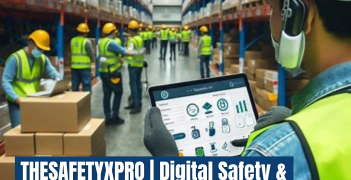Disability awareness goes far beyond acknowledging that people with disabilities exist. True awareness is about fostering empathy, breaking down stereotypes, and building inclusive environments where everyone has the opportunity to thrive. Effective Disability Awareness Campaigns are not just about highlighting challenges—they are about amplifying voices, celebrating abilities, and sparking meaningful change in communities.
Whether you’re part of a nonprofit, a business, a school, or a community group, the strategies below can help you design campaigns that inspire understanding and promote inclusion. Here are 10 creative and effective Disability Awareness Campaigns ideas that truly make a difference.
1. Real Stories, Real Voices

Personal stories have the power to shift perspectives. Sharing firsthand experiences of individuals with disabilities through videos, blogs, interviews, or podcasts humanizes the conversation and dispels harmful misconceptions. Campaigns that highlight authentic voices not only inform but also cultivate empathy and respect.
2. The Experience Challenge: Adversity to Adventure
Experiential learning is one of the most impactful ways to build awareness. Activities that simulate everyday barriers—such as navigating a building in a wheelchair or completing tasks blindfolded—help participants gain perspective on accessibility challenges. This kind of hands-on experience encourages compassion and sparks conversations about how environments can become more inclusive.
3. #InTheirShoes Social Media Campaign
Social media remains a powerful awareness tool. Encourage participants to take on small challenges inspired by the daily experiences of individuals with disabilities and share their reflections online using a campaign hashtag like #InTheirShoes. This creates a collective conversation, spreads awareness to broader audiences, and motivates people to think differently about accessibility.
4. Partner With Influencers and Advocates
Influencers and disability advocates have platforms that reach thousands, sometimes millions. By partnering with them, campaigns can amplify their messages and reach diverse audiences. Advocates bring credibility, lived experience, and passion that can turn a campaign into a movement, sparking genuine dialogue about disability rights and inclusion.
5. Host a Disability Film Screening
Films and documentaries can deliver powerful storytelling that resonates on a deep level. Hosting screenings—followed by panel discussions or Q&A sessions with disability advocates—provides audiences with an opportunity to learn, ask questions, and reflect. These events not only spread awareness but also build empathy and understanding.
6. Adaptive Sports Events
Adaptive sports are a celebration of resilience, skill, and determination. Organizing events like wheelchair basketball, seated volleyball, or adaptive track and field challenges stereotypes and highlights the talent of athletes with disabilities. These events encourage spectators to see ability first, while also promoting community participation and support.
7. Disability Awareness Week in Schools
Awareness begins with education. Organizing a Disability Awareness Week in schools helps young people understand inclusion and empathy from an early age. Activities can include interactive workshops, guest speakers, role-playing exercises, and creative projects that highlight the importance of accessibility. Early education lays the foundation for a more inclusive society.
8. “Ability, Not Disability” Art Exhibit
Art provides a universal language of expression. Hosting an exhibit that showcases work by artists with disabilities—whether painting, sculpture, performance, or multimedia—can challenge assumptions and highlight creativity. These exhibits focus on talent and expression, proving that art is limitless when it comes to ability.
9. Accessibility Audit Campaign
One of the most practical campaign ideas is to organize a community-wide accessibility audit. Volunteers, businesses, and individuals with disabilities can collaborate to assess public spaces, workplaces, and businesses. Sharing results publicly not only raises awareness of accessibility gaps but also encourages organizations to implement improvements that benefit everyone.
10. Inclusive Job Fair and Mentorship Program
Employment opportunities are a vital part of inclusion. Hosting job fairs that connect inclusive employers with candidates with disabilities can break barriers in the workplace. Pairing this with mentorship opportunities allows individuals to gain guidance and build networks, while showing businesses the value of a diverse workforce.
Beyond Campaigns: Building a Movement
Effective Disability Awareness Campaigns are not one-time events; they are stepping stones toward a more inclusive society. The real goal is to move beyond temporary awareness and into long-lasting action—whether through policy changes, better accessibility, or shifts in how communities define ability.
Awareness is not just about highlighting struggle; it is about recognizing strength, potential, and the equal worth of every individual. When we focus on celebrating abilities rather than limitations, we help build a world where inclusion is the standard, not the exception.
Final Thought
The question is not whether we should act—it’s whether we are ready to commit to change. Every campaign, big or small, can create ripples of understanding that lead to systemic progress. With thoughtful planning, creativity, and collaboration, Disability Awareness Campaigns can transform perspectives and pave the way for a more inclusive future.
Explore impactful Disability Awareness Campaigns that inspire empathy, promote inclusion, and create lasting change in communities


















